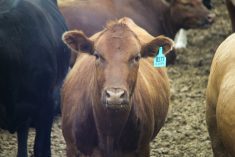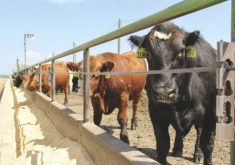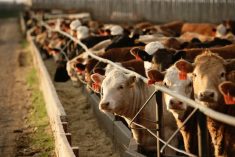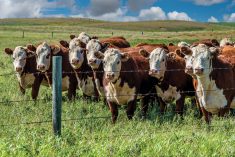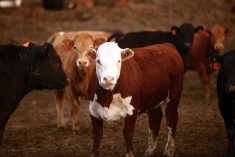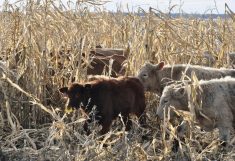The dietary preferences of free-range cattle are being studied like never before — and the findings could boost productivity, influence cattle breeding, and lighten the environmental footprint of herds.
“This is pioneering work — no one has ever at this scale linked together the productivity and associated economics, genetics and environmental outcomes of free-range grazing,” professor of rangeland ecology and management Edward Bork said in a recent article in the University of Alberta’s Folio website.
Read Also

Mosquito-borne virus could be devastating to sheep breeding operations
Cache Valley virus, a mosquito-borne disease that infects small ruminants, could be a devastating hit to small operations.
Bork and a team of 10 researchers will use GPS ear tags and pedometers to track movement of cows at the Roy Berg Kinsella Research Ranch and then conduct a sophisticated testing of manure samples that uses DNA markers to determine what plants they’ve been eating, according to the article.
“Questions to be addressed include, for example, what habitats do cattle select in a given landscape?” said Bork. “Are they willing to walk to the top of a hill to preferentially graze? Do they select forest, grassland or shrub plant species while meeting their optimal nutritional requirements? What individual plant species are they more willing to consume given that there are hundreds of species to choose from, and how does this affect their weight gain and environmental footprint?”
Linking those forage choices to the genetics of the cattle could open the door to breeding cows that are best suited to particular types of pastures and “align their forage demand with what is available,” he said.
“These animals are out in natural landscapes and continually make decisions on where to go, how far to travel and what to eat,” Bork said in the article. “Those decisions can affect some factors of ultimate productivity.
“We want to try to identify animals that are going to select the right habitat, the right forage species to optimize their weight and productivity, while at the same time not overgrazing pasture resources.”
Better matching cattle to the land they graze would improve the health of large pastures, which would then store more carbon and better support wildlife, he added.
The article can be found at the University of Alberta Folio website.
The three-year research project also involves researchers from Ag Canada and the universities of Saskatchewan and Thompson Rivers. It has several funders, including Alberta Beef Producers and RDAR (Results Driven Agriculture Research).



